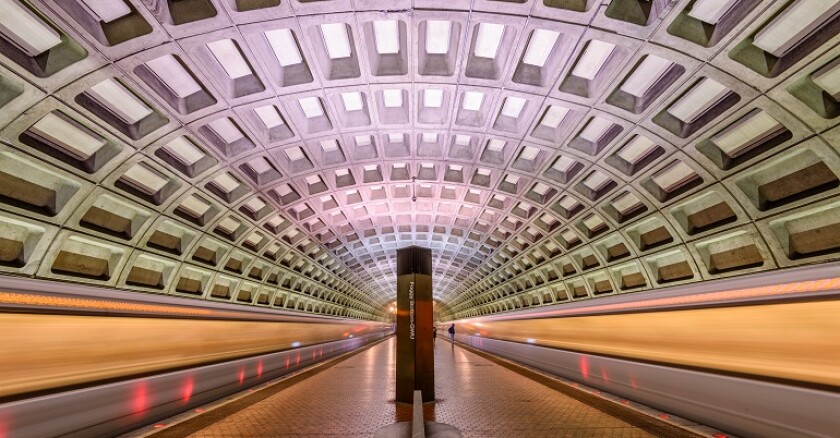This has led many to wring their hands over the future of public transit. In fact, we should be happy to see it go as it is obsolete, needlessly expensive and provides no significant environmental or social benefits.
A little over 50 years ago, urban transit was mostly private and mostly profitable. But in 1964, in the face of declining ridership and concerns about the industry's long-term financial viability, Congress offered federal subsidies to cities and states that took over private transit companies. Within a decade, all but a handful of transit companies had been "municipalized."
Those subsidies, along with those provided by states and local governments, failed to boost ridership or stabilize the industry. What followed instead was a dramatic decline in transit's productivity by any measure. The number of annual riders carried per transit employee has dropped by more than 50 percent, according to data from the American Public Transit Association. Operating and capital costs have grown more than twice as fast as fare revenues.
Adjusted for inflation, the same data show that subsidies to transit by all levels of government have totaled well over $1.1 trillion since 1964, but these subsidies haven't benefitted either cities or transit riders. In 1964, the average urban resident took more than 60 transit trips a year. Preliminary data for 2017 indicate that this has fallen to 37 trips per year, the lowest level in recorded history.
Subsidy supporters say transit helps low-income people get to work, but census data show that only about 4 percent of American workers live in households that lack cars, and a majority of them don't commute by transit. Nor are claims that transit saves energy and reduces pollution true. In 2016, transit used about 10 percent more energy per passenger mile than the average car and only slightly less than the average light truck. Both transit and cars emit about the same amount of greenhouse gases per passenger mile. People who care about energy or climate change would do better to drive a plug-in hybrid than to take transit.
The latest argument for transit is that it promotes economic development. While some studies have found that heavily used transit lines can influence property values, research published by the Federal Transit Administration has shown that this is a zero-sum game: Higher property values in one part of a city are balanced by lower values elsewhere. Not only does transit not promote overall economic growth, the high taxes required to subsidize transit may actually slow growth down. Data from more than 300 urban areas show that the regions that grew fastest in the 2000s were ones that had spent the least on transit in the 1990s, while the regions that spent the most on transit in the 1990s were among those that grew the slowest in the 2000s.
Now that ride hailing companies such as Uber and Lyft and private bus companies such as Chariot are providing increasingly affordable alternatives to public transit, it is time to think about phasing out the subsidies. That means, first, that transit agencies should stop spending money on new rail transit lines that few people will ride.
Rail transit was rendered obsolete more than 80 years ago when manufacturers had perfected buses that were less expensive to buy, operate and maintain than rail cars. Contrary to claims that light rail is "high-capacity transit," buses have much higher potential capacities: The New York-New Jersey Lincoln Tunnel Exclusive Bus Lane, for example, moves more people per hour than almost any rail line in the world, and far more than any light-rail line.
Next, transit agencies should pay down the debts they incurred building previous rail lines, as well as their unfunded pension and retiree health-care obligations. Finally, they should offer transit franchises to private companies, as the United Kingdom has done. At least until driverless cars make buses obsolete, private companies can provide bus services at a profit in many urban areas. A private company might also be able to operate the New York subway at a profit, but most other rail lines should be scrapped.
To be fair, we should end subsidies to highways as well, though those subsidies are much smaller -- 1.5 cents per passenger mile vs. nearly 90 cents for transit. Subsidies make transportation providers, whether public or private, more responsive to politicians than to transportation users. Politicians are likely to build bridges to nowhere or expensive, low-capacity rail lines, while user-fee-driven agencies will focus on maintenance and cost-effective congestion relief to keep customers happy.
The great experiment of socializing public transit has failed. Instead of trying to rescue transit, we should stop subsidizing it, saving taxpayers' tens of billions of dollars a year. There are better ways to improve urban transportation.









